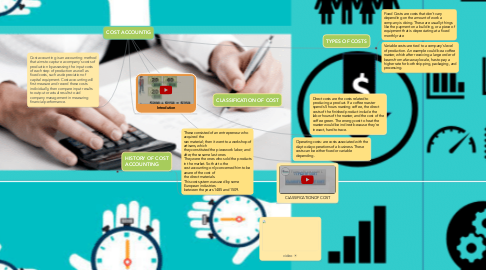COST ACCOUNTIG
by Karen Urrego

1. Cost accounting is an accounting method that aims to capture a company's costs of production by assessing the input costs of each step of production as well as fixed costs, such as depreciation of capital equipment. Cost accounting will first measure and record these costs individually, then compare input results to output or actual results to aid company management in measuring financial performance.
2. HISTORY OF COST ACCOUNTING
2.1. These consisted of an entrepreneur who acquired the raw material; then it went to a workshop of artisans, which they constituted the piecework labor; and after, these same last ones They were the ones who sold the products in the market. So that to the cost accounting only concerned him to be aware of the cost of the direct materials. This cost system was used by some European industries between the years 1485 and 1509.
3. TYPES OF COSTS
3.1. Fixed Costs: are costs that don't vary depending on the amount of work a company is doing. These are usually things like the payment on a building, or a piece of equipment that is depreciating at a fixed monthly rate
3.2. Variable costs: are tied to a company's level of production. An example could be a coffee roaster, which after receiving a large order of beans from a far-away locale, has to pay a higher rate for both shipping, packaging, and processing.
4. Direct costs are the costs related to producing a product. If a coffee roaster spends 5 hours roasting coffee, the direct costs of the finished product include the labor hours of the roaster, and the cost of the coffee green. The energy cost to heat the roaster would be indirect because they're inexact, hard to trace.
5. Operating costs: are costs associated with the day-to-day operations of a business. These costs can be either fixed or variable depending.
6. Introdution
7. video
8. CLASSIFICATION OF COST
9. CLASSIFICATION OF COST


